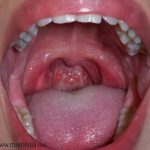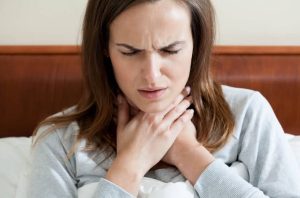Throat irritation is a common discomfort that many people experience at some point in their lives. Whether it’s a scratchy sensation, pain, or difficulty swallowing, throat irritation can be both annoying and disruptive to daily life. In this article, we’ll explore the various causes of throat irritation, common symptoms to watch out for, and effective remedies to alleviate discomfort and promote throat health.
Causes of Throat Irritation:
1. Viral Infections: Common colds, flu, and other viral infections can often cause throat irritation. These infections inflame the throat tissues, leading to symptoms such as soreness, scratchiness, and sometimes even hoarseness.
2. Bacterial Infections: Bacterial infections like strep throat can also result in throat irritation. These infections typically cause more severe symptoms, including intense throat pain, difficulty swallowing, and swollen tonsils.
3. Allergies: Allergic reactions to airborne particles like pollen, dust, or pet dander can irritate the throat, leading to symptoms such as itchiness, sneezing, and postnasal drip.
4. Environmental Factors: Dry air, smoke, pollution, and other environmental factors can contribute to throat irritation by drying out the mucous membranes lining the throat, making it feel scratchy and uncomfortable.

Humidifier

5. Acid Reflux: Gastroesophageal reflux disease (GERD) can cause stomach acid to travel up the esophagus and irritate the throat, resulting in symptoms like heartburn, throat burning, and a sour taste in the mouth.
Symptoms of Throat Irritation:
1. Soreness: A common symptom of throat irritations is a persistent sore throat, which may feel raw, scratchy, or tender. 
2. Difficulty Swallowing: Throat irritations can make swallowing painful or uncomfortable, particularly when eating or drinking.

3. Hoarseness: Irritation of the vocal cords can lead to hoarseness or changes in voice pitch and quality.
4. Dryness: Dry air or environmental factors can cause the throat to feel dry and parched, exacerbating irritation.
5. Cough: Throat irritations may trigger a persistent cough, which can worsen the discomfort and prolong healing.

Remedies for Throat Irritations:
1. Stay Hydrated: Drinking plenty of fluids helps keep the throat moist and soothes irritation. Opt for warm liquids like herbal tea, broth, or warm water with honey and lemon.

2. Gargle Salt Water: Gargling with warm salt water can help reduce inflammation and kill bacteria, providing temporary relief from throat irritations.
3. Use Humidifiers: Using a humidifier in your home can add moisture to the air, preventing the throat from drying out and alleviating discomfort.

Humidifier
4. Avoid Irritants: Minimize exposure to irritants like smoke, pollutants, and allergens, which can exacerbate throat irritations.
5. Over-the-Counter Remedies: Over-the-counter medications such as throat lozenges, cough syrups, and pain relievers can help alleviate symptoms and promote healing.
6. Rest Your Voice: If throat irritations is accompanied by hoarseness or voice changes, rest your voice as much as possible to prevent further strain on the vocal cords.

Throat irritations can be caused by a variety of factors, ranging from viral infections to environmental triggers. By understanding the underlying causes and symptoms of throat irritations, you can take proactive steps to alleviate discomfort and promote healing. Whether it’s staying hydrated, using humidifiers, or avoiding irritants, there are plenty of remedies available to soothe your throat and restore comfort. If symptoms persist or worsen, consult a healthcare professional for proper diagnosis and treatment.
Pingback: The effects Excessively Cold Water Consumption in the Morning - SimplExplainer
Pingback: Common Causes of Sore Throat - SimplExplainer